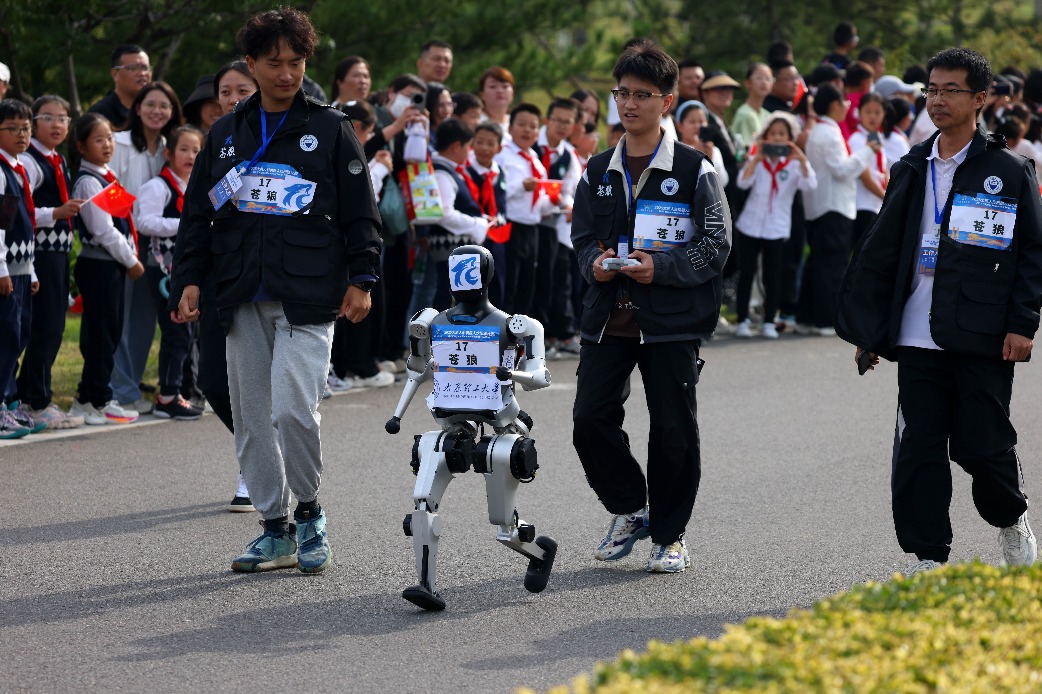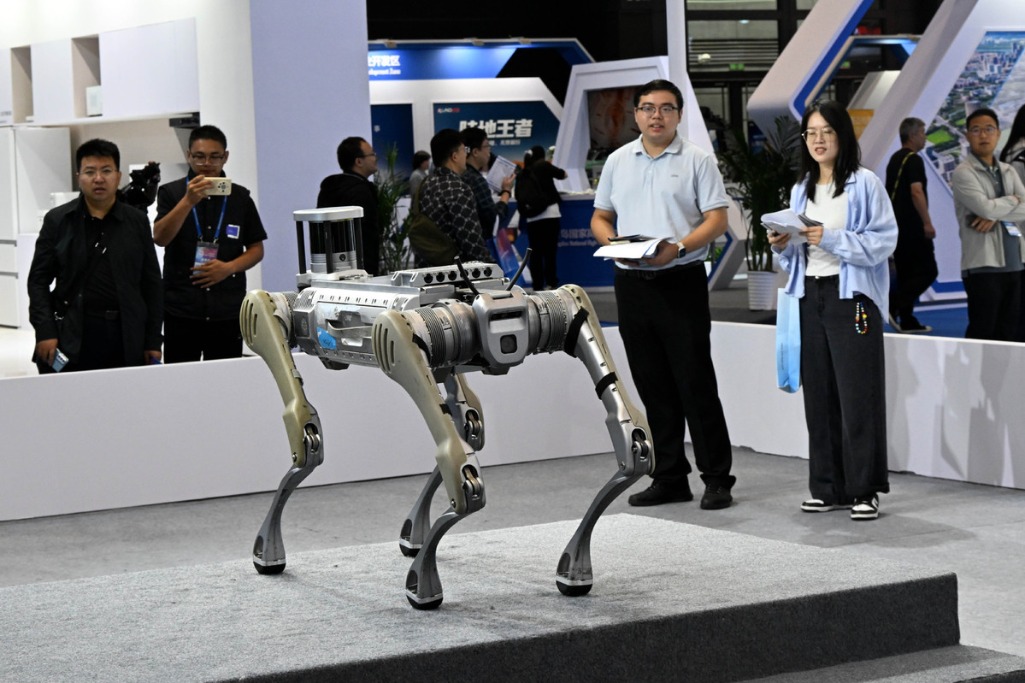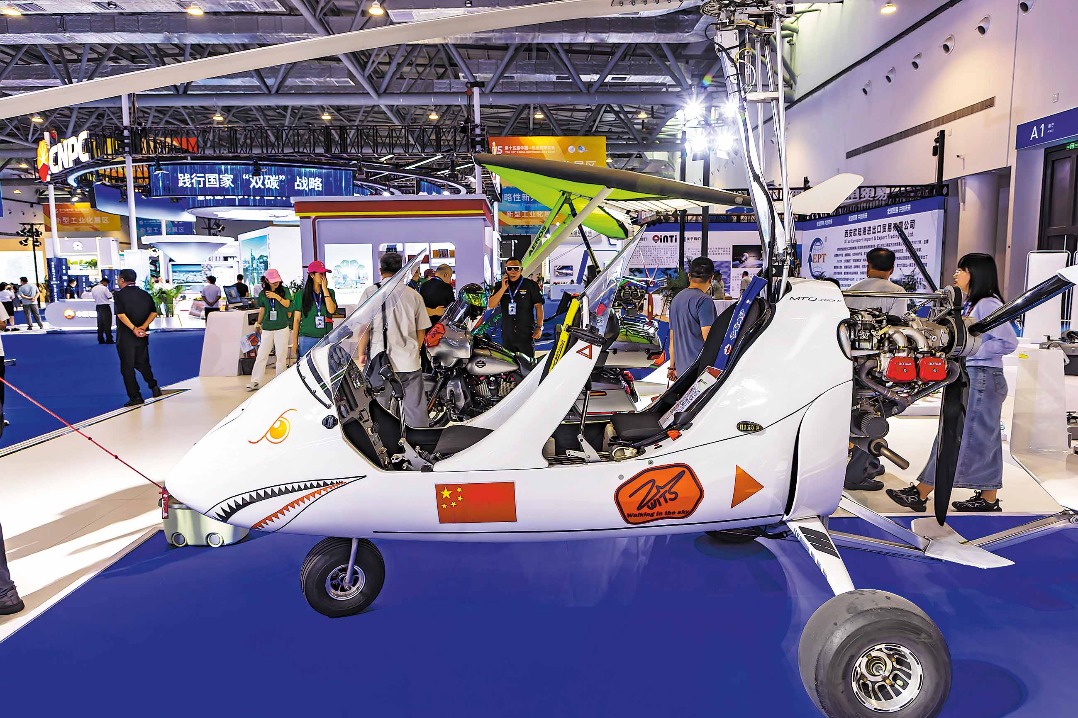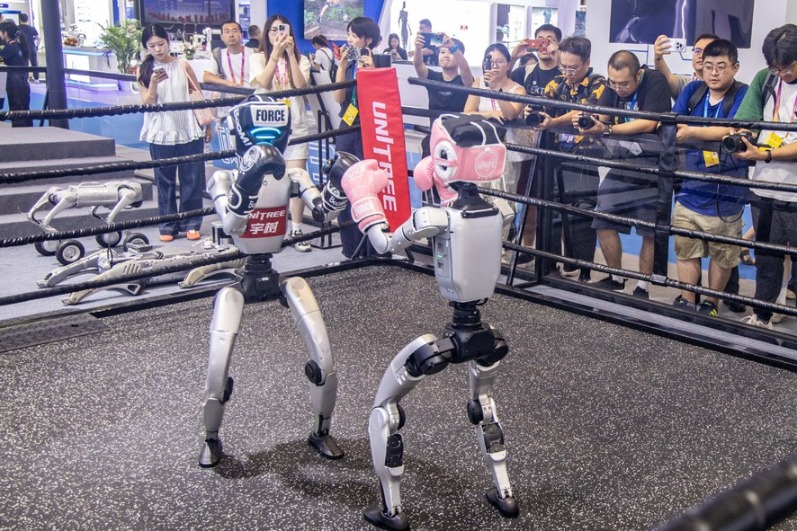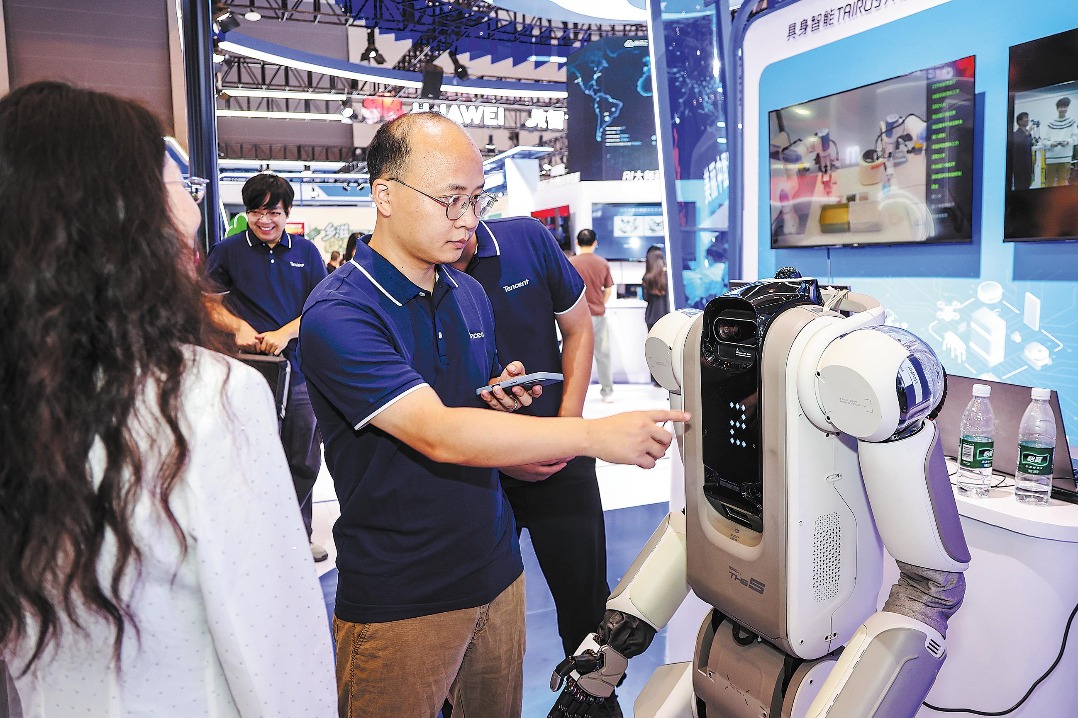China set to narrow AI gap with firm efforts
Two sessions stress tech lead, focus on future, allaying concerns over lagging behind

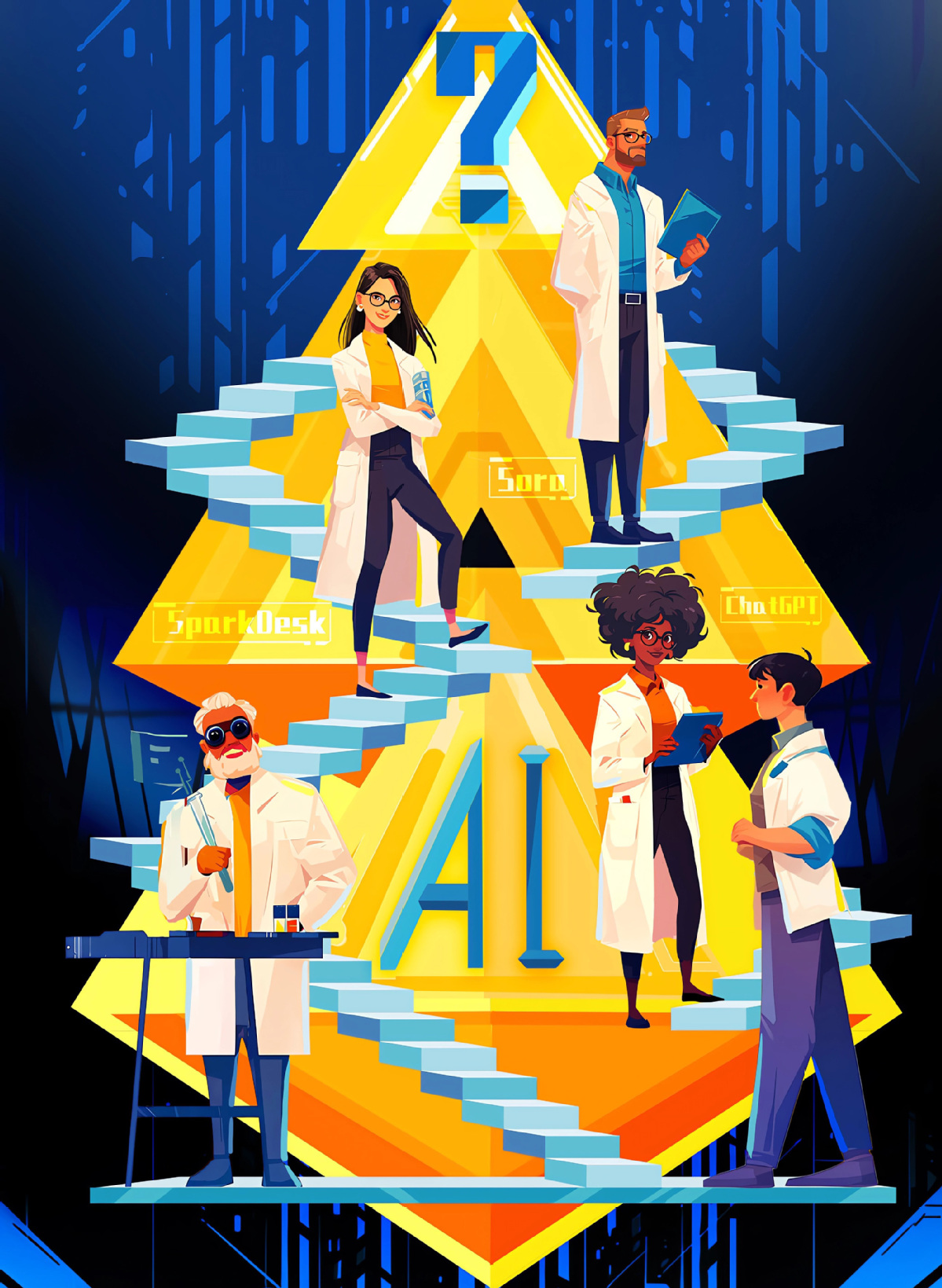
During the ongoing two sessions, the Chinese government has unequivocally put the development of the domestic artificial intelligence industry high on its agenda — and this should help allay any lingering concerns that the country is lagging behind advanced economies in key technologies, experts said.
The latest concerns arose in February when US firm OpenAI, which had created a sensation with ChatGPT, launched a text-to-video model called Sora, sending ripples through China's AI industry. Reactions ranged from admiration and appreciation to "AI anxiety".
Why weren't groundbreaking technologies like ChatGPT and Sora emerging in China? Is the AI gap between China and the United States widening? Has China lost the tech plot? Has its innovation drive lost its edge? Questions like that have stoked anxiety among both netizens and industry experts alike.
It is natural to have such anxiety, but what it indicates really is the underlying sense of urgency to catch up with huge changes brought by cutting-edge technologies, said Shen Hao, deputy chief engineer of the Shanghai Artificial Intelligence Research Institute.
Industry insiders believe Sora — it allows users to create photo-realistic videos up to a minute-long, all based on prompts they have written — will actually end up narrowing the AI gap between China and the US. For, Chinese companies will likely soon ramp up their efforts to make similar products, given their unique advantages.
But they also believe Sora is a wake-up call for China as it shows there is a gap with US counterparts in terms of AI development, especially in aspects like computing power and talent.
"The gap between China and the US in AI mainly lies in (tech) direction. Once the direction is settled, Chinese companies can quickly catch up using their rapid learning capabilities," said Zhou Hongyi, founder and chairman of 360 Security Technology, who is also a member of the 14th National Committee of the Chinese People's Political Consultative Conference, the country's top political advisory body.
Zhou explained that the direction could be transformer, a deep learning model that learns context and meaning by tracking relationships in sequential data. Both ChatGPT and Sora are based on transformers.
"There is a gap between China and the US in terms of AI development. But the gap is not as big as the one in semiconductor lithography machines.
"Considering that transformer, Sora or Sora-like products are all fundamentally 'software', such an AI gap between China and the US can be bridged within one to two years," Zhou said.
From December to February, more than 10 A-share companies operating in AI-related fields, including Wondershare, BroadV, Eclicktech and Hanvon Technology, had all disclosed their investment and progress in the development of text-to-video models.
Although the current text-to-video technologies developed by Chinese companies are less effective than Sora, industry experts believe that China already has all the core infrastructure required to develop Sora-like products, including large language models, DALL.E 3, large-scale video data sets, AI computing power systems and large model development tool stacks.
LLMs serve as foundation models, or general-purpose models pre-trained on huge datasets. DALL.E 3 is an AI system that takes a text prompt as input and generates a new image as output.
Ma Xin, secretary-general of the IEEE metaverse standards committee and chairman of the IEEE metaverse standards working group, said that Sora does have a strong visual impact, but it does not break away from ChatGPT and DALL.E to reach another level.
"Sora's capabilities are all perceived — they exist only in people's minds. In the short term, it can only help improve efficiency, in terms of interaction with people, but it's not possible to truly penetrate the industrial field," Ma said.
Zhou Chengxiong, an analyst from the Institutes of Science and Development of the Chinese Academy of Sciences, said: "Although most of the current major breakthroughs in AI technology emerge from US companies, latecomers also have obvious advantages. For instance, latecomers face fewer risks and uncertainties during the progress."
China has a huge opportunity to be at the forefront of the world in the application of AI technologies in the future, he said.
Concurred Wang Peng, a senior expert from the Tencent Research Institute. Wang said Sora's launch further proves that diffusion transformer is a feasible direction for multi-modal AI.
DiTs adhere to the best practices of vision transformers, which have been shown to scale more effectively for visual recognition than traditional convolutional networks.
"It is still possible for major Chinese AI manufacturers to leverage existing resources to catch up with Sora's current level in about a year," he said.
Last month, the State-owned Assets Supervision and Administration Commission, or SASAC, of the State Council, China's Cabinet, said the country will push centrally administered State-owned enterprises to integrate the development of AI into their overall planning, actively promote industrial renewal and accelerate the layout and development of the AI industry.
On Tuesday, the Government Work Report submitted to the national legislature for deliberation assured that China will promote innovative development of the digital economy, actively develop the digital industry, transform traditional industries with digital technologies, and fully integrate digital technology into the real economy.
Specifically, the country will step up the launch of an AI Plus initiative, R&D and application of big data and AI, and build digital industry clusters with international competitiveness, the report said.
Chinese companies have also been racing to launch AI large models to compete with OpenAI's ChatGPT and GPT-4.0. Earlier, Baidu, Sense-Time and AI startups such as Baichuan Intelligent Technology and Zhipu AI released their AI chatbots.
Zhou Yu, chairman of Beijing Fanyu Technology Co, a startup specializing in natural language processing products and services, said that as the stakes are high, Chinese and US startups appear to be adopting different approaches to developing LLMs that drive generative AI.
"Founders of US startups put more emphasis on the research and development of underlying technology and groundbreaking innovations. The US is a world leader in terms of hardware and deep learning frameworks," Zhou said.
"Chinese AI startups focus more on applications, and those launching these startups are better at adapting technology to various industries, and commercializing different applications. They are also more flexible in creating personalized products and innovations," she added.
Zhou Hongyi from 360 said that 2024 should be the "year of application" for Chinese AI, believing that large models will have great potential in many vertical fields of enterprises this year.
"Developing a universal large model that surpasses GPT-4.0 may be challenging at the moment, but GPT-4.0 currently knows everything, yet is not specialized," Zhou said.
"If we can excel in a particular business domain by training a large model with unique business data and integrating it with many business tools within that vertical sector, such a large model will not only have intelligence, but also possess unique knowledge, even hands and feet. It is entirely possible for China to surpass GPT-4.0 in some vertical domains."
Not everyone agreed though. Wang Peng, a researcher at the Beijing Academy of Social Sciences, said China should make more efforts to fill the gap with the US in AI development, especially in key technologies and related supporters.
"Computing power, cloud servers and AI chips are critical to the AI industry, and their technical level and performance directly determine the depth of AI applications. China still has an obvious gap with the US in terms of these key drivers," Wang said.
Chen Zhi, a researcher with the Institute of Innovation and Development, the Chinese Academy of Science and Technology for Development, said: "But for both China and the US, the path to AI development is challenging and requires substantial effort. If the two countries collaborate and complement each other in terms of resources, they can leverage their relative strengths to reap mutual benefits, promote technological progress and ensure the safe, trustworthy and reliable application of AI."

















